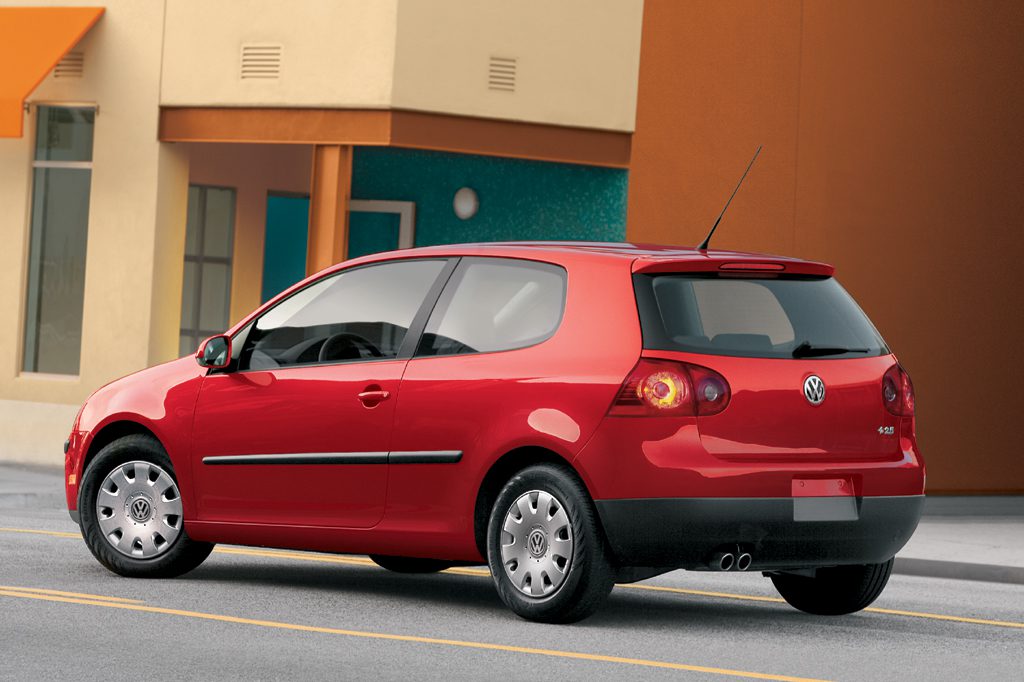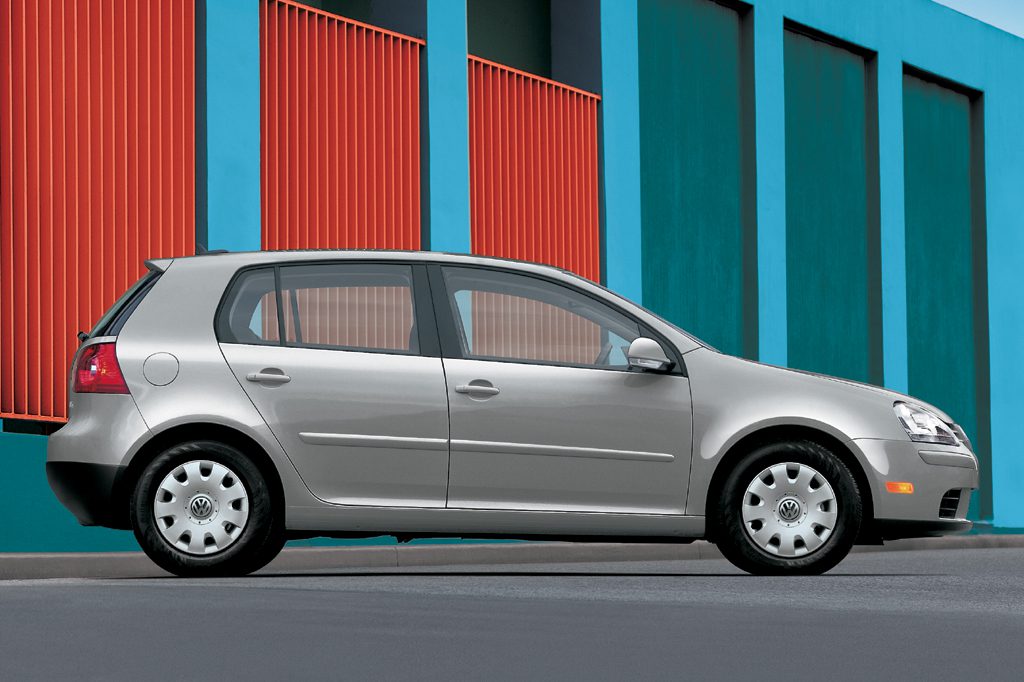| Compact car; Built in Germany |
|
|
| Good condition price range: $6,700 – $12,500* |



| Pros: |
|
| Cons: |
|
Like the related Jetta, Volkswagen’s Rabbit sets the class standard for overall refinement and solidity. Rabbits also boasts a high-quality interior. The hatchback body style makes it a versatile little hauler, too. Fuel economy is disappointing in this class (especially in city driving). So are Volkswagen’s customer-satisfaction scores for reliability and dealer service.
Overview
Before the 2007 model year began, Volkswagen decided to rename its Golf model the Rabbit-a name taken from the company’s heritage. Both the Rabbit and the redesigned-for-2006 GTI were based on the Jetta sedan that had been redesigned for 2005. Rabbit rivals included the Ford Focus, Honda Civic, Mazda 3, and new Nissan Versa.
Rabbit hatchbacks came in two- and four-door form, all with front-wheel drive. Rabbits used a 150-horsepower five-cylinder engine. A five-speed manual transmission was standard. Optional was a six-speed automatic that included manual-shift capability. Safety features included all-disc antilock brakes, traction control, front side airbags, and curtain side airbags. Rear side airbags were available for four-door models. An antiskid system was optional. Standard wheels held 15-inch tires. A sunroof, navigation system, and digital-audio adapter were optional. Volkswagen’s Jetta four-door sedan shared the Rabbit powertrain and basic underskin design.
Yearly Updates
| 2007 Rabbit Little changed for the 2007 model year. |
| 2008 Rabbit The 2008 Rabbit gained power, as its 2.5-liter five-cylinder got an increase of 20 horsepower to 170. Rabbits came in a single S trim level. Heated front seats with lumbar adjustment were standard in four-door Rabbits and optional for two-doors. |
| 2009 Rabbit An antiskid system became standard instead of optional on VW’s compact hatchbacks. A five-speed manual gearbox was standard on two-door Rabbits. Four-doors had a standard six-speed automatic transmission, which was optional for two-doors. Early in 2009, Volkswagen announced that the Rabbit name would be dropped, and future U.S. models would go back to the Golf nameplate (as used elsewhere in the world). |
